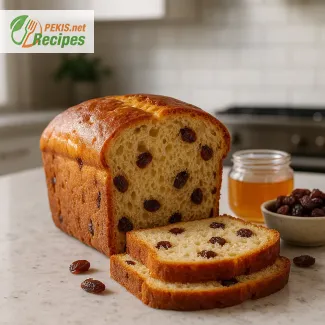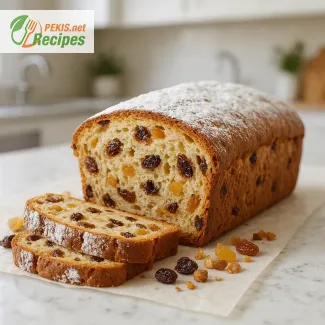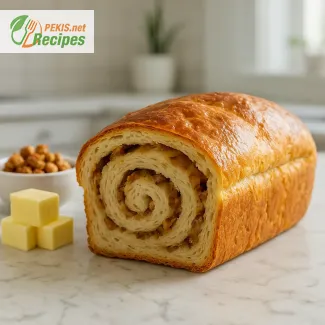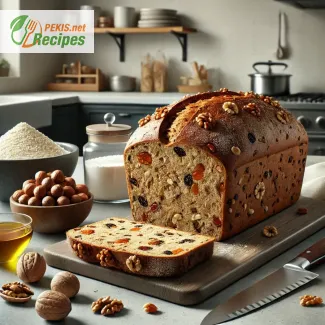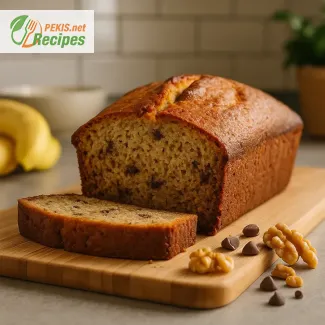
The Ultimate Moist Banana Loaf You’ll Love Baking Every Week
Discover the secret to baking the perfect banana bread every time
Few baked goods capture the essence of comfort baking quite like a moist banana bread. With its irresistibly tender crumb, warm aroma, and naturally sweet flavor, it’s the kind of treat that brings joy in every slice. Whether you're a beginner looking for a foolproof recipe or an experienced baker in search of a reliable classic, a simple banana bread is the cornerstone of any home kitchen repertoire. It’s a beloved favorite not just for its delicious taste, but also for its practical charm—transforming overripe bananas into a golden, aromatic loaf that fills the home with rich, nostalgic warmth.
Why banana bread remains a timeless baking favorite
What makes banana bread so universally adored is its unique combination of simplicity and indulgence. You don't need elaborate ingredients or special equipment. With just a few pantry staples and some ripe bananas, you can create a loaf that’s soft, fluffy, and bursting with natural sweetness. Unlike more elaborate cakes, this loaf is often enjoyed without frosting, letting the flavor of the bananas shine through. Its versatility means it can be served for breakfast, an afternoon snack, or even dessert—making it a go-to for any time of day.
For families, it’s a smart way to reduce food waste while keeping picky eaters happy. For those who bake for comfort or nostalgia, banana bread taps into memories of cozy kitchens, shared meals, and slow weekend mornings. Its dense yet tender texture, mildly spiced notes, and golden crust make it as appealing today as it was decades ago when it first became a household staple.
Key characteristics of the perfect banana bread
The ideal texture: moist, not soggy
Achieving the perfect texture is all about balance. The best banana bread is moist but never gummy, with a tender crumb that’s soft yet holds together when sliced. This balance comes from the right ratio of ripe bananas, flour, eggs, and fat. Using overripe bananas—those with brown-speckled peels—is essential for achieving both moisture and maximum banana flavor. Their natural sugars also add a depth of sweetness that can’t be replicated with sugar alone.
Aroma and flavor: warm, rich, and naturally sweet
As the loaf bakes, your kitchen will fill with the sweet scent of bananas mingled with vanilla and just a touch of spice. Many bakers opt for a pinch of cinnamon or nutmeg to enhance the natural flavor without overpowering it. A touch of vanilla extract deepens the profile, while melted butter or oil enriches the batter for a velvety mouthfeel. The result? A golden-brown crust with a moist, flavorful center.
Customizable add-ins for every taste
One of the beauties of a classic banana bread recipe is how adaptable it is. For a bit of crunch, chopped walnuts or pecans are a popular choice. If you're craving a more indulgent treat, chocolate chips pair wonderfully with banana's natural sweetness. You can also swirl in peanut butter, scatter dried fruits like raisins or cranberries, or go tropical with shredded coconut or chopped pineapple.
Common mistakes to avoid when making banana bread
Using bananas that aren’t ripe enough
One of the biggest missteps in baking banana bread is using bananas that are too yellow or firm. Ripe bananas—those with dark brown spots or even black skins—are ideal. They’re not only easier to mash but also much sweeter and more aromatic.
Overmixing the batter
To achieve a light, fluffy texture, it’s essential not to overmix the batter. Stirring too vigorously or for too long develops the gluten in the flour, which can lead to a dense, tough loaf. Gently fold the dry ingredients into the wet mixture just until everything is combined.
Baking at the wrong temperature
An even bake is key to achieving a beautiful loaf. Baking at too high a temperature may cause the outside to brown too quickly while leaving the center raw. Using the right oven settings and positioning the loaf in the center rack ensures it cooks through without burning.
The emotional connection to banana bread
More than just a recipe, banana bread represents something deeper—comfort, tradition, and care. It’s often one of the first things people learn to bake and remains a staple they return to over the years. Passed down through families, adapted for dietary needs, and baked in countless kitchens across the world, banana bread is a symbol of home and warmth.
Its uncomplicated ingredients and forgiving nature make it a source of confidence for novice bakers, while its timeless appeal keeps seasoned bakers coming back. Whether shared during quiet mornings or given as a heartfelt homemade gift, banana bread has earned its place as one of the most beloved home-baked goods of all time.
Preparing to bake: what you’ll need
Before diving into your baking session, it helps to gather your tools and prep your workspace. A standard 9x5-inch loaf pan, mixing bowls, a whisk or spatula, and measuring tools are all you really need. Line your loaf pan with parchment or lightly grease it for easy removal. Preheat your oven to the correct temperature so that your bread starts baking evenly from the first moment it’s placed inside.
And of course, the star of the show: ripe bananas. Whether you have two or three ready to use, these golden fruits provide the structure, sweetness, and signature flavor of your loaf. With these simple preparations, you’re ready to create the perfect banana bread.
1. Preheat the oven:
Preheat your oven to 175 °C (350 °F). Grease a 9×5-inch (23×13 cm) loaf pan or line it with parchment paper for easier removal.
2. Mash the bananas:
In a large mixing bowl, mash the ripe bananas until smooth using a fork or potato masher.
3. Mix the wet ingredients:
Add melted butter, sugar, eggs, milk, and vanilla extract to the mashed bananas. Whisk until the mixture is well combined and creamy.
4. Combine the dry ingredients:
In a separate bowl, sift together the flour, baking soda, cinnamon, and salt.
5. Blend the mixtures:
Gently fold the dry ingredients into the wet banana mixture using a spatula or spoon. Do not overmix. If using walnuts or chocolate chips, stir them in at this stage.
6. Pour into the pan:
Transfer the batter into the prepared loaf pan and smooth the top with a spatula.
7. Bake the banana bread:
Place the pan in the center of the preheated oven and bake for 50–55 minutes, or until a toothpick inserted into the center comes out clean.
8. Cool before serving:
Remove from the oven and let it cool in the pan for 10 minutes. Then transfer the loaf to a wire rack to cool completely before slicing.
Creative Twists to Make Banana Bread Even Better
Elevate your banana bread with expert tips and smart ingredient upgrades
Banana bread has stood the test of time as a cherished comfort food. While the classic recipe is loved for its moist texture and naturally sweet flavor, it also offers a versatile base that can be customized in countless ways. Whether you're aiming to make your banana bread more nutritious, richer in flavor, or suitable for special diets, a few thoughtful tweaks can significantly enhance the final result. These adjustments not only make the loaf more exciting but can also cater to different tastes and health goals.
Enhancing flavor depth through ingredient upgrades
Add richness with browned butter
Swapping regular melted butter for browned butter introduces a new layer of complexity. Browned butter adds a nutty, caramelized flavor that pairs beautifully with ripe bananas and warm spices like cinnamon or nutmeg. It takes just a few extra minutes on the stovetop and can dramatically improve the overall depth of your loaf.
Use alternative sweeteners for a richer taste
Instead of plain granulated sugar, try using light brown sugar, coconut sugar, or maple syrup. These alternatives contribute a more molasses-like sweetness, enhancing the caramel notes that complement banana naturally. Maple syrup, for example, also helps keep the loaf moist while providing subtle earthy undertones.
Experiment with spice blends
While cinnamon is a traditional go-to, adding a small pinch of allspice, cardamom, or cloves can intensify the aroma and introduce a warming complexity. For an autumn-inspired version, try a blend of pumpkin spice, or even add a spoonful of instant espresso powder for a mocha twist.
Boosting moisture and texture
Incorporate Greek yogurt or sour cream
Replacing part of the butter or milk with Greek yogurt or sour cream yields a banana bread that’s incredibly moist and tender, while also adding a slight tang that balances the sweetness. These dairy products also increase the protein content, making each slice more satisfying.
Blend bananas into a puree
For an even finer crumb and better moisture distribution, blend the bananas into a smooth puree instead of mashing them with a fork. This ensures consistent moisture and flavor throughout the loaf without dense or gummy pockets.
Making it healthier without compromising taste
Choose whole grain or alternative flours
You can replace up to half of the all-purpose flour with whole wheat flour, oat flour, or almond flour. Whole wheat adds fiber and a subtle nuttiness, while almond flour enhances richness and provides healthy fats. Oat flour contributes a soft, almost cake-like texture.
Reduce sugar or add natural fruits
Bananas themselves are naturally sweet. If your bananas are fully ripe, you can often reduce the sugar by 25–30% without noticeably changing the flavor. Alternatively, fold in finely chopped dates or raisins for bursts of natural sweetness and additional fiber.
Swap butter for healthier fats
Consider replacing some or all of the butter with avocado puree, olive oil, or coconut oil. Avocado adds creaminess with heart-healthy fats and no added flavor, while olive oil gives a fruity richness that can beautifully contrast sweet elements like chocolate chips or nuts.
Avoiding common banana bread mistakes
Using under-ripe bananas
One of the biggest mistakes is using bananas that aren’t ripe enough. For maximum flavor and moisture, your bananas should have dark brown skins and a strong banana aroma. If they’re too firm, your bread will lack both sweetness and texture.
Overmixing the batter
Banana bread batter should be folded gently, just until the dry ingredients are incorporated. Overmixing develops the gluten in the flour, resulting in a dense, chewy texture instead of the desired tender crumb.
Incorrect baking temperature
Baking at a temperature that’s too high can cause the outside of the loaf to brown too quickly, leaving the inside undercooked. Conversely, a low oven temperature might dry out the bread. Stick to 175 °C (350 °F) and position the loaf pan in the center of the oven for even baking.
Going beyond the basics: flavor and presentation ideas
Swirl in nut butters or chocolate
Creating a swirl of peanut butter, almond butter, or Nutella throughout the batter not only looks attractive but also adds a rich, gooey contrast to the soft banana base. Spoon dollops on top of the batter and swirl gently with a knife before baking.
Add a crunchy topping
Before baking, sprinkle the top with rolled oats, crushed nuts, or a light cinnamon sugar mixture. This gives your banana bread a beautiful golden crust and a satisfying crunch with each bite.
Make it a double chocolate banana bread
Add cocoa powder and dark chocolate chunks to the batter for a decadent version. This variation is especially popular with kids and chocolate lovers, transforming a humble loaf into a dessert-worthy treat.
Why homemade banana bread is always better
Store-bought banana bread often contains preservatives, excessive sugar, or artificial flavors. Making it from scratch allows you to control every ingredient, ensuring freshness and better nutrition. The process of baking itself also creates a more authentic experience, from the warm scent that fills the kitchen to the satisfaction of slicing into a golden, fluffy loaf that you crafted by hand.
When you bake at home, you can adapt the recipe to meet your preferences, experiment with flavors, and share something wholesome with friends or family. Banana bread is more than a recipe—it’s a tradition, a ritual, and an opportunity for creativity. With a few thoughtful changes, this classic can evolve into a personalized masterpiece that’s as nourishing as it is delicious.
Allergens present in the recipe:
- Eggs
- Milk (butter, milk)
- Gluten (all-purpose flour)
- Tree nuts (if walnuts are added)
Suggestions for allergen-free variations:
- Replace eggs with mashed flaxseed (2 tbsp ground flaxseed + 6 tbsp water) for an egg-free version.
- Substitute milk with almond milk, oat milk, or soy milk for a dairy-free version.
- Use vegan butter or coconut oil instead of butter.
- Replace wheat flour with a gluten-free all-purpose flour blend to make it gluten-free.
- Omit nuts or use allergy-safe alternatives like sunflower seeds.
Vitamins and minerals per serving (approximate):
- Vitamin B6 – 0.4 mg – supports brain function and metabolism
- Vitamin C – 6 mg – boosts immune health and skin repair
- Vitamin A – 120 IU – important for vision and immune support
- Potassium – 320 mg – regulates blood pressure and heart function
- Magnesium – 30 mg – helps with muscle and nerve function
- Calcium – 20 mg – essential for bone strength
- Iron – 1 mg – supports oxygen transport in the blood
Antioxidants per serving (approximate):
- Phenolic compounds from bananas – 100 mg – reduce inflammation and oxidative stress
- Flavonoids (if dark chocolate used) – 150 mg – support heart health and circulation
- Vitamin C – 6 mg – helps neutralize free radicals
- Selenium – 1.5 µg – protects cells from damage and supports immunity
